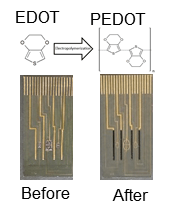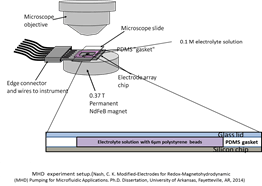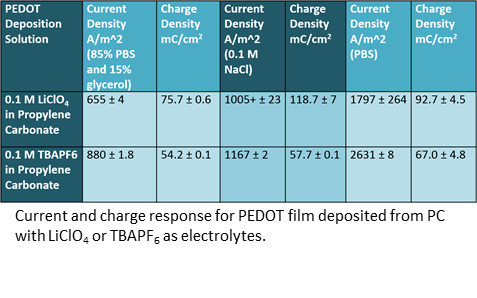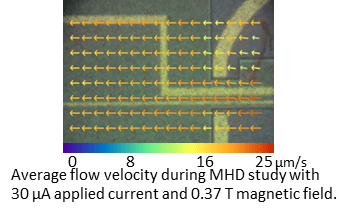Mounting Protocol Development for Photovoltaic Cells for CubeSat on PCBs
Student: Devin Benson
Major Professor: Dr. Ingrid Fritsch
Research Area(s):
Biological Sensors
Background/Relevance
- Magneto hydrodynamics (MHD) as a pumping system, enables the ability to detect and follow the effect of treatment and improve accessibility of and decrease cost of healthcare through microfluidics.
- MHD follows the right hand rule ForceMHD = current X magnetic field.
- PEDOT(Poly 3,4-ethylenedioxythiophene) improves electrical response.
-
PEDOT morphology can be modified by changing solvent and electrolyte increasing current and charge capacity creating a better pumping system allowing for longer operational time without need to recharge the film.
Innovation
- Conducting polymer as redox species
- Improve polymer electrochemical properties through different electrodeposition conditions.
Approach
- Deposit PEDOT onto gold electrodes using cyclicvoltammetry while varying deposition parameters.
- Used acetonitrile and propylene carbonate (PC) as solvents, and LiClO4 and TBAPF6 as electrolytes.
- Characterized modified electrodes using chronoamperometry (CA).
- MHD study using chronopotentiometry.
- Particle image velocimetry software used to determine velocity profile.


Key Results
- Electrodeposition from PC and LiClO4 provides maximum charge density.
- Increased scan rate during deposition decreases current density.
- PEDOT film is more stable in aqueous solution than in organic solution.
- Able to maintain flow rate above 20 µm/s for more than 200 s at 30 µA applied current, longer than previous attempts (75 s).

Conclusions
- PEDOT deposited from propylene carbonate and LiClO4 can be effectively used as an immobilized redox species for use as an effective MHD pumping system.
- Films produced from propylene carbonate have higher stability.
- The use of an organic solvent has significant current and charge density improvements over water. This means MHD pumping can produce faster velocities and pump fluid farther.
- Future work: Optimize pumping system for use with cell cytometry and other lab-on-a-chip applications.

